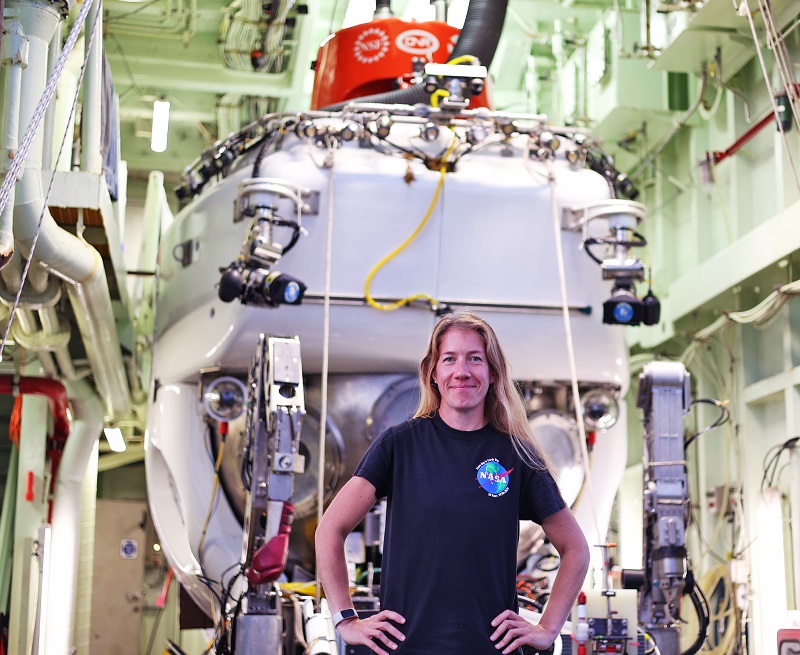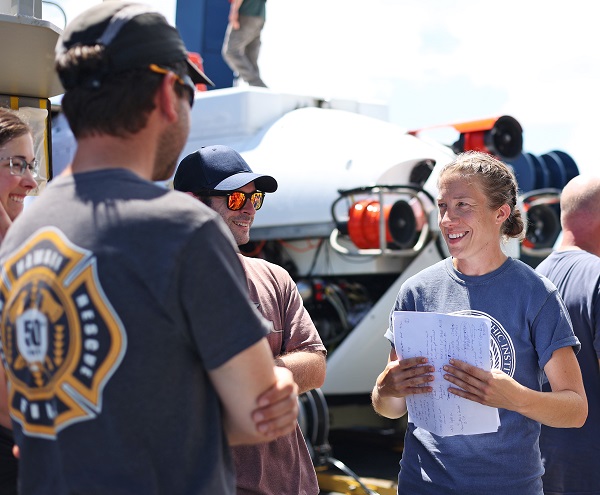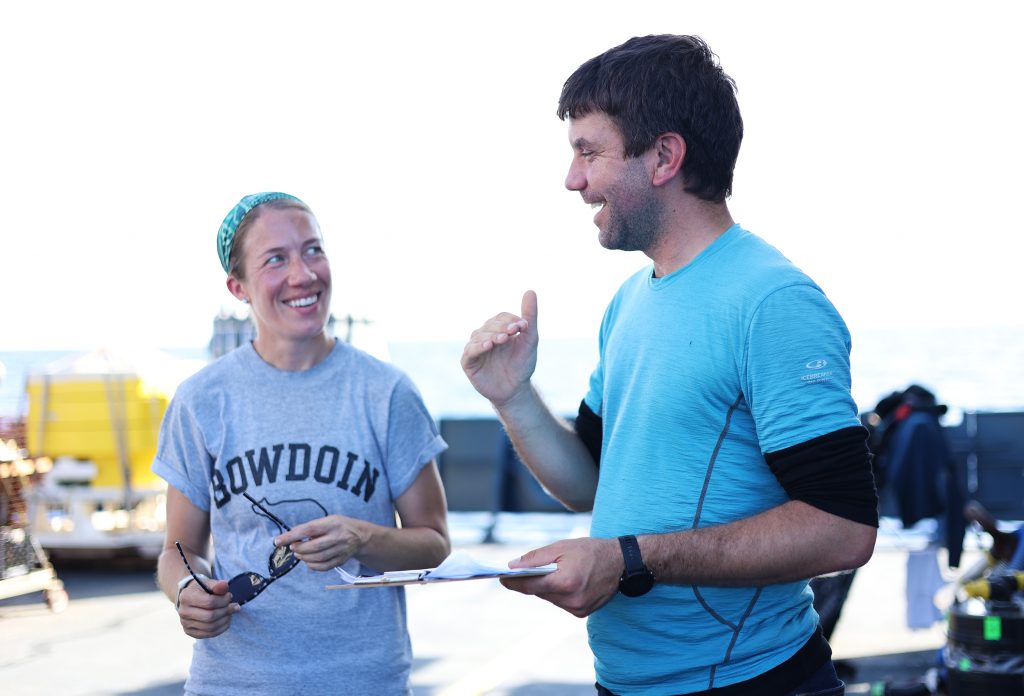Alvin Science Verification Cruise
 Assistant Scientist Catherine Walker accomplished her first dive in the human-occupied vehicle Alvin during this summer's science verification expedition near the Puerto Rico Trench and Mid-Cayman Rise.
Assistant Scientist Catherine Walker accomplished her first dive in the human-occupied vehicle Alvin during this summer's science verification expedition near the Puerto Rico Trench and Mid-Cayman Rise.
Alvin is now certified to dive to a maximum depth of 6,500 meters (4 miles). The new maximum depth puts roughly 99 percent of the global seafloor in reach, including the lower Abyssal Zone and the upper Hadal Zone, home to ultra-high-temperature hydrothermal vents and newly discovered volcanic processes.
During the second leg of the cruise from San Juan, Puerto Rico to Tampa, Florida, scientists focused on chemical and biological sampling around hydrothermal vent and seep sites, including some of the hottest and deepest known hydrothermal vents on Earth. Hydrothermal vents are considered important sources for the building blocks of life. The seafloor dynamics that occur in these areas may be similar to vent systems and surface feature formation on icy moons around the solar system.

Catherine Walker talks with her shipmates on the aft deck of R/V Atlantis.
Dr. Walker has used seafloor basin morphology to explain the formation of settling features on the surface of Enceladus, a moon of Saturn. With funding from WHOI’s Access to the Sea program, she was able to participate in the Alvin verification cruise in order to incorporate current projects such as correlating heating along seafloor faults with the morphology of Europa.
Dr. Walker has also been examining the effects of energy gradients on the potential for the evolution of life in Europa’s ocean. A specific goal is to characterize the proportion of oxygen and hydrogen in Europa’s ocean and to understand how seawater reacts with new rock faces as they form over time, which are created through new fracturing or deepening of existing cracks. The Alvin dive and data collected on fracture, fault and ridge morphologies, and heat production will elucidate planned future research on comparative seafloor ridge morphology efforts at Ganymede, Enceladus and other icy moons.
